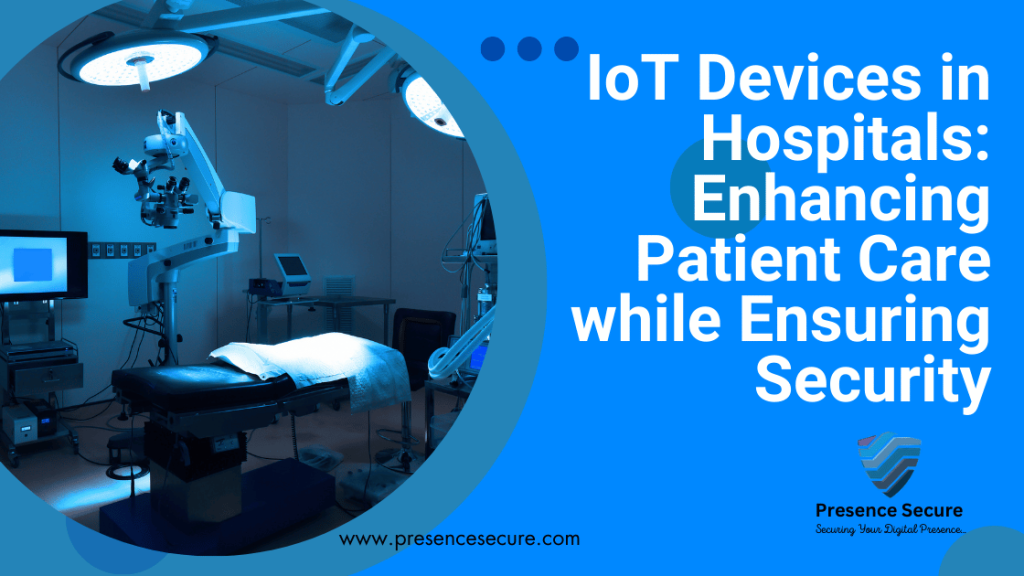As you step into the hospital, much like any other day, an extraordinary scene unfolds. Patients are seamlessly monitored in real-time, and their vital signs are displayed on screens at the nurses’ station. Healthcare professionals move fluidly between rooms, equipped with devices that offer instant access to patient records. This is the transformative world of the Internet of Things (IoT) in hospitals, where technology is revolutionizing patient care. Yet, alongside these advancements, the critical issue of security emerges.
Picture a scenario where IoT devices in hospitals, such as smart infusion pumps, remote monitoring systems, and connected imaging machines, fall victim to cyberattacks. The potential repercussions are serious: interrupted care, compromised patient data, and even threats to patient safety. While these IoT devices are essential for modern healthcare, ensuring their security is crucial. Much like the persistent challenges posed by cybersecurity threats, the approach to securing IoT devices in hospitals must be thorough and proactive.
Let’s explore how hospitals can leverage IoT to enhance patient care while ensuring these devices remain secure:
- Continuous Monitoring and Alerts: IoT devices continuously monitor patients’ health, providing real-time data that helps in timely diagnosis and treatment. However, these devices need robust security measures, such as encryption and secure communication protocols, to protect sensitive patient data from unauthorized access.
- Remote Patient Management: IoT devices enable remote patient monitoring, allowing healthcare providers to track the health of patients outside the hospital. This reduces readmissions and improves chronic disease management. These devices should be regularly updated with the latest security patches and software updates to ensure security.
- Smart Medication Delivery: IoT-enabled smart infusion pumps and medication dispensers ensure accurate dosages are delivered to patients, reducing the risk of human error. Secure authentication methods, such as multi-factor authentication, are essential to prevent unauthorized manipulation of these devices.
- Data Encryption: Encrypting data at rest and in transit adds a critical layer of security. Even if an attacker gains access to the data, encryption ensures it remains unreadable without the appropriate decryption keys.
- Device Authentication and Authorization: Only authorized devices and personnel should be able to access the IoT network using a zero-trust mechanism. Implementing stringent authentication mechanisms helps in preventing unauthorized devices from connecting to the network.
- Regular Security Audits: Conducting regular security audits and vulnerability assessments helps in identifying and addressing potential security gaps. These audits should include the IoT devices and the networks they connect to.
- Employee Training: Educating healthcare staff about the importance of IoT security is vital. Training programs should focus on best practices for device usage, recognizing potential security threats, and reporting any suspicious activities.
- Incident Response Plan: Having a well-defined incident response planis crucial. This plan should outline the steps to be taken in the event of a security breach, including containment, eradication, recovery, and communication strategies.
- Network Segmentation: Dividing the hospital network into segments helps in containing the spread of any potential cyberattack. Critical systems and sensitive data can be isolated, reducing the impact of a breach on the entire network.
- Collaborative Efforts: Collaborating with other healthcare institutions and cybersecurity experts helps in staying updated on the latest threats and sharing best practices for IoT security.
In conclusion, the integration of IoT devices in hospitals is a game-changer, significantly enhancing patient care through real-time monitoring, remote management, and precise medication delivery. These advancements not only improve the efficiency and accuracy of healthcare services but also contribute to better patient outcomes. However, the potential risks associated with these technologies cannot be overlooked. Ensuring the security of IoT devices is paramount to safeguarding patient data, maintaining uninterrupted healthcare services, and protecting patient safety.
Hospitals must adopt a comprehensive approach to IoT security, encompassing continuous monitoring, data encryption, regular security audits, and thorough employee training. By implementing robust security measures and fostering a culture of awareness and preparedness, healthcare institutions can effectively mitigate the risks posed by cyber threats. The dual focus on innovation and security is essential in this digital age, where technology is deeply integrated into patient care. By doing so, hospitals can fully leverage the benefits of IoT while maintaining the trust and safety of their patients.
Faith Kajotoni Peter


